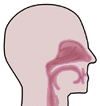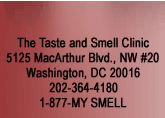  |
||
 |
January 2022Why Were Only Four Odors Chosen to Measure Smell Function in Normal Subjects and in Patients with Smell LossWe have chosen four odors to reflect components of the olfactory receptor field. We have used these four odors – pyridine, nitrobenzene, thiophene and amyl acetate. Why were four odors chosen since there are thousands of odors which comprise this receptor field. In order to measure smell function it is necessary to determine several aspects of odor character and compare results in normal subjects and in patients with smell loss (hyposmia). Thus, each odorant must be identified and quantitated such that smell detection, smell recognition, smell magnitude estimation and smell hedonics can be characterized and quantified for each odor. Time to measure these parameters for these four odors requires about twenty minutes. This then appears to be the optimal length of time by which the subject can focus effectively on the psycho-physical aspects of this test and for the lack of receptor fatigue which allows the subject to perceive differences effectively in a three stimulus, forced choice staircase technique to obtain these measurements for each of these odors. Using more than four odors can initiate receptor fatigue while using less than four odors does not allow us to sample each of the major components of the sensory receptor field. Reference
|
|